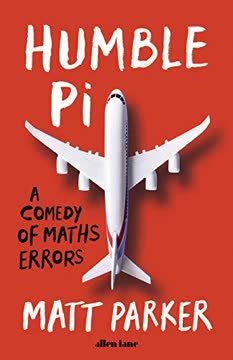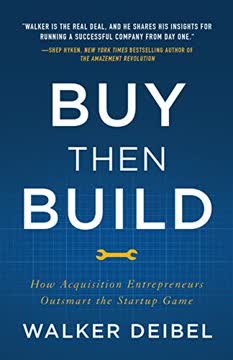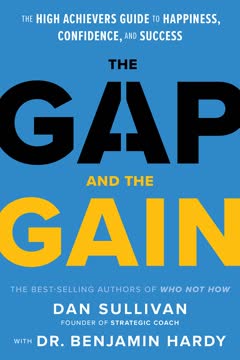Key Takeaways
1. The longevity economy is reshaping the future of business and society
The aging of populations represents the most profound change that is guaranteed to come to high-income countries everywhere and most low- and middle-income ones as well.
Demographic shift. The world is experiencing an unprecedented aging of populations due to increased longevity and declining birth rates. By 2050, the global proportion of people 65 and older will nearly double to 16.7%. This demographic change is creating massive economic opportunities, with spending by older adults in the U.S. alone reaching $5.6 trillion in 2015.
Economic impact. The longevity economy is not just about products for older people - it's transforming entire industries and societies. Key areas of impact include:
- Healthcare and caregiving
- Technology and smart homes
- Financial services and retirement planning
- Transportation and mobility solutions
- Education and lifelong learning
- Travel and leisure
Business opportunity. Companies that recognize this demographic shift and adapt their products and services stand to benefit enormously. However, many businesses are still unprepared for an older world, missing out on the potential of this growing market.
2. Our current narrative of old age is outdated and limiting
Old age, as it stands, is ridiculously unequal.
Outdated stereotypes. The prevailing narrative of old age - centered on decline, dependency, and leisure - was largely constructed in the early 20th century. This narrative fails to reflect the diverse experiences and aspirations of today's older adults.
Negative consequences. This limiting narrative:
- Constrains how older people see themselves and what they believe is possible
- Leads to ageism and discrimination in the workplace and society
- Results in products and services that don't meet older adults' true needs and desires
- Creates intergenerational tension and fears of demographic "time bombs"
Need for new stories. We need new, more empowering narratives of aging that recognize older adults as valuable contributors to society and consumers with diverse wants and needs. This shift in perspective is crucial for businesses, policymakers, and society as a whole.
3. Women are driving the transformation of the longevity economy
Women's notions of what old age is tend to be further flung from the current narrative than those of men.
Economic influence. Women control the majority of household spending decisions and are the primary caregivers for older adults. They are also living longer than men on average, making them a crucial demographic for businesses to understand and serve.
Unmet needs. Traditional products and services often fail to meet the true demands of older women. This creates opportunities for businesses that can tap into their insights and desires.
Innovation drivers. Women, especially those in midlife and beyond, are increasingly becoming entrepreneurs and "lead users" - innovating solutions to problems they experience. Examples include:
- Online platforms for social connection and dating
- Fashion brands that celebrate style at all ages
- Health and wellness products tailored to women's needs
4. Age-friendly design benefits everyone, not just older adults
Transcendent products, in particular, are like the rising tide that lifts all ships, regardless of whether they're brand new or have braved decades of stormy seas.
Universal design principles. Products designed with older users in mind often end up benefiting people of all ages. Examples include:
- OXO kitchen tools with ergonomic grips
- Smartphones with larger screens and voice controls
- Lever door handles instead of knobs
Accessibility as innovation. Solving design challenges for older adults or those with disabilities can lead to breakthrough innovations that improve products for everyone. This "transcendent design" approach creates products people actively seek out, rather than stigmatized "old person" solutions.
Business opportunity. Companies that embrace inclusive design principles can tap into larger markets and create products with wider appeal. This approach also future-proofs products as the population ages.
5. Health and safety innovations are improving quality of life in old age
Products that prioritize fun, a delightful user experience, and the aspirations of the older consumer are in no way limited to the futuristic or high-tech.
Beyond basic needs. While health and safety are crucial, products for older adults should go beyond just solving problems. Successful innovations:
- Enhance independence and dignity
- Enable social connection and meaningful activities
- Are enjoyable and delightful to use
Technology integration. Emerging technologies are creating new possibilities for aging well:
- Smart home systems for monitoring health and safety
- Robotics and AI for assistance and companionship
- Virtual and augmented reality for cognitive stimulation and social engagement
Holistic approach. The most effective health and safety solutions consider the whole person, addressing physical, mental, and social well-being. This might include combining medical monitoring with social platforms or integrating exercise into daily activities.
6. Work and education are being reimagined for longer lifespans
Beyond pursuing work, beyond seeking out new knowledge, there is one other important thing that older people chasing wild new sources of meaning are likely to do: buy stuff—and a lot of it.
Rethinking retirement. The traditional model of retirement is becoming obsolete as people live longer, healthier lives. Many older adults want to continue working, either in their established careers or new fields.
Lifelong learning. Education is no longer just for the young. Older adults are seeking opportunities to:
- Acquire new skills for work or personal growth
- Pursue passions and interests
- Stay mentally sharp and socially engaged
Flexible work arrangements. Companies are adapting to retain older workers and tap into their experience:
- Phased retirement programs
- Mentorship and knowledge transfer initiatives
- Age-diverse teams and multigenerational workplaces
7. The pursuit of meaning and legacy is a powerful force in later life
There is a group of consumers living out on the cutting edge of age. They're intimately acquainted with the real challenges that can pop up in later life as well as what can go right.
Beyond leisure. Many older adults are seeking purpose and meaning beyond traditional retirement activities. This drives demand for:
- Volunteer and philanthropic opportunities
- Encore careers and entrepreneurship
- Creative pursuits and self-expression
Legacy building. The desire to leave a positive mark on the world becomes increasingly important. This manifests in:
- Family history and storytelling projects
- Mentoring and knowledge sharing
- Charitable giving and social impact initiatives
Personal growth. Older adults continue to evolve and seek self-actualization. Products and services that support personal development and new experiences are in high demand.
8. Technology is enabling new models of aging in place and community
The advent of such transcendent technologies will, yet again, add to older adults' independence while improving health outcomes—both improving later life and moving another pebble from the "crisis" side of the longevity scales to the "opportunity" side.
Smart homes. Technology is making it easier for older adults to live independently:
- Sensors and AI for monitoring health and safety
- Voice-controlled systems for home management
- Telemedicine and remote care solutions
Connected communities. Digital platforms are fostering new forms of social connection:
- Virtual villages for neighborhood support
- Online interest groups and learning communities
- Intergenerational networking and skill-sharing
On-demand services. The sharing economy and gig work are providing flexible support:
- Ride-sharing and grocery delivery
- Task-based help with home maintenance
- Peer-to-peer caregiving networks
9. Businesses must adapt to serve the diverse needs of older consumers
If you're selling a retirement financial product, for instance, do your commercials show people walking on a beach or a golf course or involved in their community?
Market segmentation. The older consumer market is not monolithic. Businesses need to recognize the diversity of:
- Age sub-groups (young-old, middle-old, old-old)
- Lifestyles and values
- Health status and capabilities
- Financial resources
User-centered design. Successful products for older adults:
- Address real needs and desires, not stereotypes
- Involve older users in the design process
- Are tested with diverse user groups
Marketing and messaging. Effective communication with older consumers:
- Avoids patronizing or infantilizing language
- Showcases diverse representations of aging
- Focuses on benefits and aspirations, not just problem-solving
10. The baby boomer generation is redefining the experience of aging
There is another way of thinking about products that puts success within reach: above all other considerations, they should make it easy for consumers to fulfill their jobs.
Cultural influence. The baby boomers have shaped society at every stage of life and will continue to do so as they age. Their expectations and demands are driving innovation in products, services, and policies for older adults.
Tech-savvy consumers. Unlike previous generations, boomers are comfortable with technology and expect digital solutions. This is accelerating the development of:
- User-friendly interfaces and devices
- Online platforms for health, finance, and social connection
- Digital content and entertainment tailored to older audiences
Redefining aging. Boomers are challenging traditional notions of what it means to be "old":
- Pursuing active and engaged lifestyles
- Embracing continued learning and personal growth
- Demanding products that align with their values and self-image
Last updated:
FAQ
1. What is The Longevity Economy by Joseph F. Coughlin about?
- Exploring the aging market: The book investigates the global demographic shift toward older populations, framing it as the world’s fastest-growing and most misunderstood market.
- Challenging old age narratives: Coughlin argues that the prevailing view of aging as decline is outdated and harmful, advocating for a new, empowering narrative.
- Business and societal implications: The author highlights how businesses, governments, and nonprofits are unprepared for the longevity economy, and offers insights on how to better serve older adults’ real needs and aspirations.
2. Why should I read The Longevity Economy by Joseph F. Coughlin?
- Understanding a major demographic shift: The book provides essential insights into the predictable and profound impact of aging populations on economies, politics, and society.
- Challenging misconceptions: It debunks myths about older adults being resistant to change or technology, showing their diversity and economic power.
- Practical business guidance: Coughlin offers a roadmap for innovation, helping readers and organizations design products and services that truly resonate with older adults.
3. What are the key takeaways from The Longevity Economy by Joseph F. Coughlin?
- Old age is a social construct: Much of what we believe about aging is based on outdated narratives that limit opportunity and innovation.
- Economic power of older adults: People over 50 control a majority of household wealth and spending, making them a crucial consumer group.
- Businesses are unprepared: Most companies lack strategies for older consumers, often due to ageist assumptions and lack of empathy.
- Women lead the future: Older women are primary caregivers, consumers, and innovators, shaping the future of the longevity economy.
- Empathy and design matter: Success requires radical empathy and transcendent design that excites and delights older users.
4. What are the best quotes from The Longevity Economy by Joseph F. Coughlin and what do they mean?
- “Old age is made up.” This quote highlights the idea that our concept of old age is a relatively recent social invention, not an inevitable biological reality.
- “The future of old age is female.” Coughlin emphasizes the outsized influence of older women as consumers, caregivers, and innovators.
- “Design for delight, not just accessibility.” The author urges businesses to go beyond basic accommodations and create products that genuinely excite older adults.
- “Empathy is the engine of innovation.” Radical empathy, achieved through immersive experiences, is essential for designing products that meet older adults’ real needs.
5. How does Joseph F. Coughlin define and explain the "narrative of aging" in The Longevity Economy?
- Historical invention: The narrative of old age as decline emerged in the 19th and 20th centuries, shaped by medical theories and social institutions like pensions.
- Impact on society and business: This story led to age segregation, limited innovation, and stereotypes of older adults as needy or greedy.
- Need for a new narrative: Coughlin argues that this outdated view now constrains both older adults and businesses, calling for a narrative that reflects diversity, capability, and aspiration.
6. What is "transcendent design" in The Longevity Economy and why is it important?
- Definition of transcendent design: It’s universal design elevated—products are so accessible and intuitive that they appeal to all ages, not just older adults or those with disabilities.
- Examples and impact: Products like OXO kitchen tools and smartphones are cited as transcendent designs, improving usability for everyone and avoiding stigma.
- Business and social benefits: Transcendent design raises quality of life, supports independence, and drives market success by appealing to a broad demographic.
7. How does The Longevity Economy by Joseph F. Coughlin address older adults’ relationship with technology?
- Mental models matter: Older adults often reject technology not due to inability, but because products don’t fit their established habits and expectations.
- Case study—BMW’s iDrive: The iDrive system failed with older users because it conflicted with their mental models, illustrating the importance of intuitive design.
- Designing for delight: Successful technology must consider both physiological factors and mental models, creating interfaces that are intuitive and enjoyable for all ages.
8. What is "lead-user innovation" and how does it relate to aging in The Longevity Economy by Joseph F. Coughlin?
- Definition of lead-user innovation: Lead users are consumers who experience needs ahead of the market and have the skills to create new solutions, often driving breakthrough products.
- Older adults as lead users: Baby boomers and especially older women, with their wealth and tech fluency, are positioned to innovate in aging-related products and services.
- Market disruption: These innovators can challenge companies stuck in outdated narratives by creating products that better meet older adults’ real needs.
9. What role do women play in the longevity economy according to The Longevity Economy by Joseph F. Coughlin?
- Primary consumers and caregivers: Women influence a majority of consumer purchases and provide most informal eldercare, making them central to the aging market.
- Innovators and entrepreneurs: Older women have unique insights into aging challenges and aspirations, positioning them as lead users and drivers of innovation.
- Market power and barriers: Despite their influence, women face challenges in tech and venture capital, but their economic demand is forcing companies to adapt.
10. How does The Longevity Economy by Joseph F. Coughlin address the economic impact of aging populations?
- Labor market challenges: Aging leads to workforce shrinkage and productivity declines as skilled older workers retire.
- Opportunities in retention: Strategies like ergonomic adaptations and flexible scheduling can help retain experienced older employees.
- Broader economic shifts: The longevity economy creates demand for new products and services, representing a multi-trillion-dollar market for businesses that understand older consumers.
11. How does Joseph F. Coughlin compare The Villages and Beacon Hill Village as models for aging in The Longevity Economy?
- The Villages: A large, age-segregated retirement community in Florida, offering leisure-focused lifestyles but reinforcing stereotypes and intergenerational tensions.
- Beacon Hill Village: A community model supporting aging in place within mixed-age neighborhoods, emphasizing integration and mutual aid.
- Implications for business: Beacon Hill’s inclusive approach offers a more sustainable and appealing vision for aging, guiding businesses in designing better products and services.
12. What practical methods and tools does The Longevity Economy by Joseph F. Coughlin recommend for businesses to understand and serve older consumers?
- Radical empathy through simulation: Tools like the AGNES suit allow designers to experience the physical limitations of aging, fostering empathy and better design.
- Lead-user engagement: Involving older adults, especially women, in product development helps uncover real needs and drive innovation.
- Transcendent design principles: Businesses should aim for products that delight and empower older users, avoiding stigma and broadening market appeal.
Review Summary
The Longevity Economy received mixed reviews, with praise for its insights on aging consumers and criticism of its repetitiveness. Readers appreciated the book's focus on the untapped market of older adults and its challenge to stereotypes about aging. Many found the content thought-provoking and relevant to businesses and marketers. Some criticized the length and writing style, while others praised the author's examples and vision for serving the needs of an aging population. Overall, reviewers found value in the book's perspective on the economic potential of older consumers.
Similar Books










Download PDF
Download EPUB
.epub digital book format is ideal for reading ebooks on phones, tablets, and e-readers.




